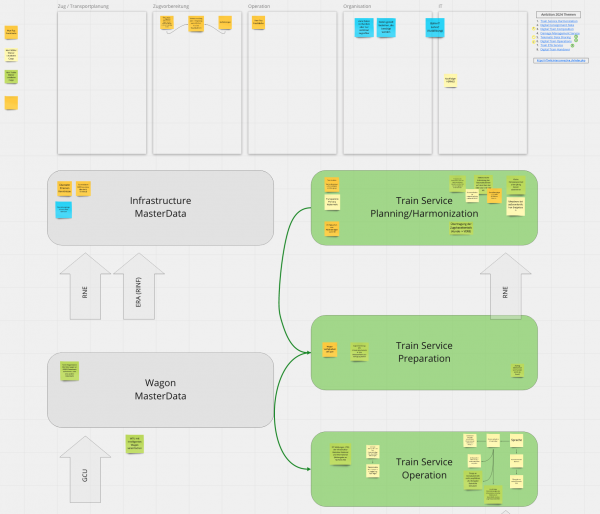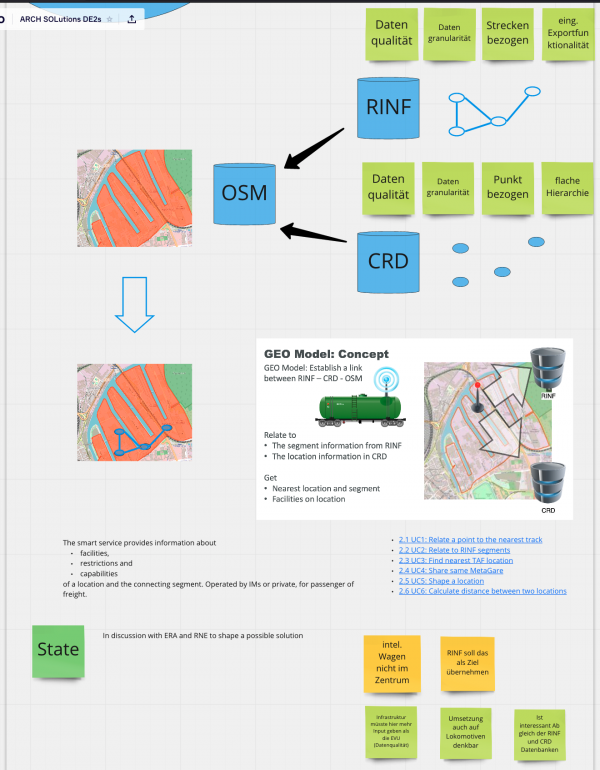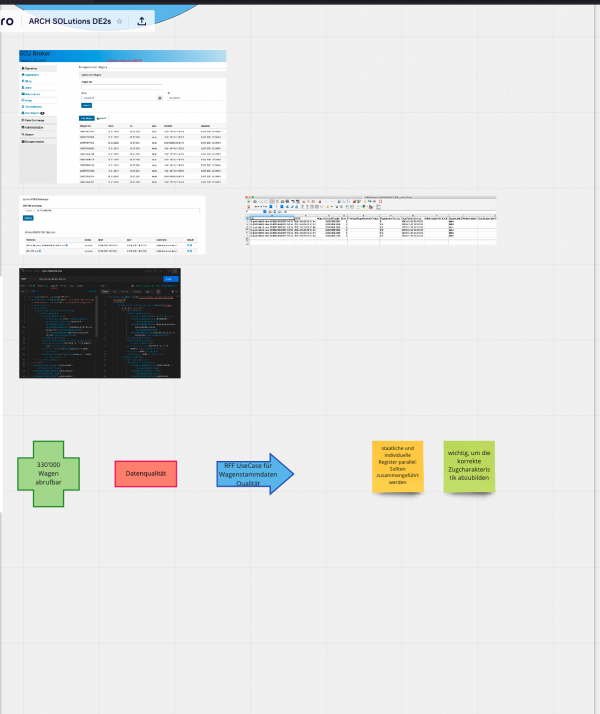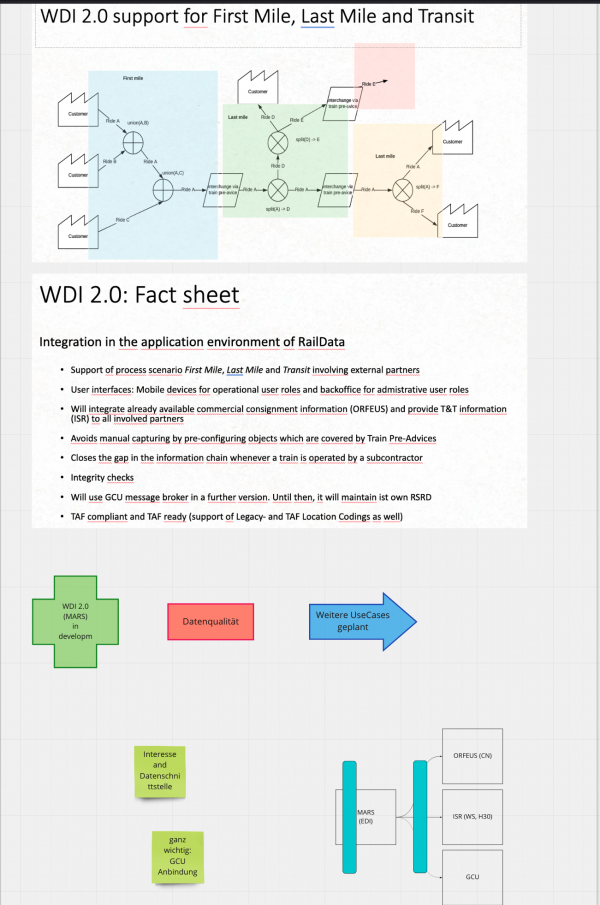DS DE2 SOL
Contents
Organisation
The GAP Session was held on 21.October 09:00 to 11:00 with two participants
- Michael Thaller Wiener Lokalbahn Cargo
- Ulrich Putz Frachtbahn AG
Another participants were excused because of operational issues
- Dejan Perjic Wiener Lokalbahn Cargo
The next alignment session is planned for 30.November.
SOL
Mapping GAPs to SOLutions
Between the two workshops the RFF team
- grouped the raised issues from the GAP session and
- attributes proposed solutions to those groups
There were 5 potential solution areas identified:
- POC GEO model for the group infrastructure master data
- Technical wagon data for the group wagon master data
- Train Service Harmonization for the group train service planning
- MARS for the group train service handover and the group train service observation
- POC digital train operation for the group train service observation
POC GEO Model
The GEO Model concept foresees to
- link the existing infrastructure databases (CRD, RINF, ...)
- benefit from the open source community driven OpenStreetmap database [[1]] for railway related information
- aggregate this information and
- offer service
- for translation
- for catching network points & segments
- for calculation of distances
- for facility information
The use cases of the GEO model can be found here.
At the moment three of the six defined services are planned to be realized in the POC and would be available by early 2022.
The participants
- showed interest in obtaining a link between TAF CRD and RINF information
- marked that it is crucial to have access to the complete network information (IM coverage, ports and terminals)
- questioned why the RUs need to amend and link master data that are in the domain of IMs.
- raised concerns about the liability of the OSM service. In the discussion we concluded that we reduce this risk by not adding additional information to the OSM dataset beside the linking IDs. In case of a migration from OSM to another GEO database these links can be exported and transferred to the new service.
Technical wagon data
As solution for retrieving technical wagon data RFF proposes to use the GCU Message Broker functionality. The Broker
- accepts wagon lists as input
- distributes the requests to the corresponding keepers
- ask the specific keeper systems for the technical data
- aggregates the answers and
- replies synchronously to the requesting RU.
Status
At the moment the technical data for 330'000 wagons are available. With the ongoing integration of further keeper systems this number will increase.
The participants raised no further questions.
The data quality of the technical data is heterogeneous across the wagon keeper. The maintenance of
- the wagon list and
- the technical attributes of the wagons
differs widely among the keepers. There the proposed measure is to set up a quality reporting process as foreseen in the RFF Capabilities. With such a quality feedback loop installed
- the quality rate can be measured and
- over time step by step increased.
Train service harmonization
The solution is identified in
- the smart service SM 04 Train Service Harmonization and
- the ambition 2024 topic Train Service Harmonization.
Status
Due to several causes among others
- complextity and
- the missing basics in process definitions and data model
the prioritization of those topics is ranked not the highest.
They will be the next in row to start to work on
- the necessary processes,
- message exchange standards and
- the appropriate data model.
Both participants stressed that this topic is very important and should be treated with high priority.
MARS release spring 2022
The solution encompasses the functionality planned for the MARS MVP project. The project includes
- the management of the Digital Consignment Note and
- the Digital Train Handover
for smaller RUs on web based or mobile clients.
Status
The project plans to develop the necessary functionality until Spring 2022.
The participants showed their interest and underlined the importance to use the GCU technical wagon data (which is planned for a further release of MARS).
Concerns were raised from the participants about
- the data quality and completeness of the transferred data,
- the importance of the user authentication
POC Digital train operation
The POC for the platform foresees to prove and to learn the platform functionality based on those services
- Digital Train Operations
- Collect all train related information (TRF, TRI)
- Inform registered users about train status
- GEO model
- Relate a point to the nearest track
- Shape a location
- Calculate distance between two locations
Status
The platform vendor has been chosen, the project has started. When the proposed use cases can be realized realized during the project phase they would become available for RU consumption as of Spring 2022.
RFF Showcases
Both showcases were presented to the audience.



